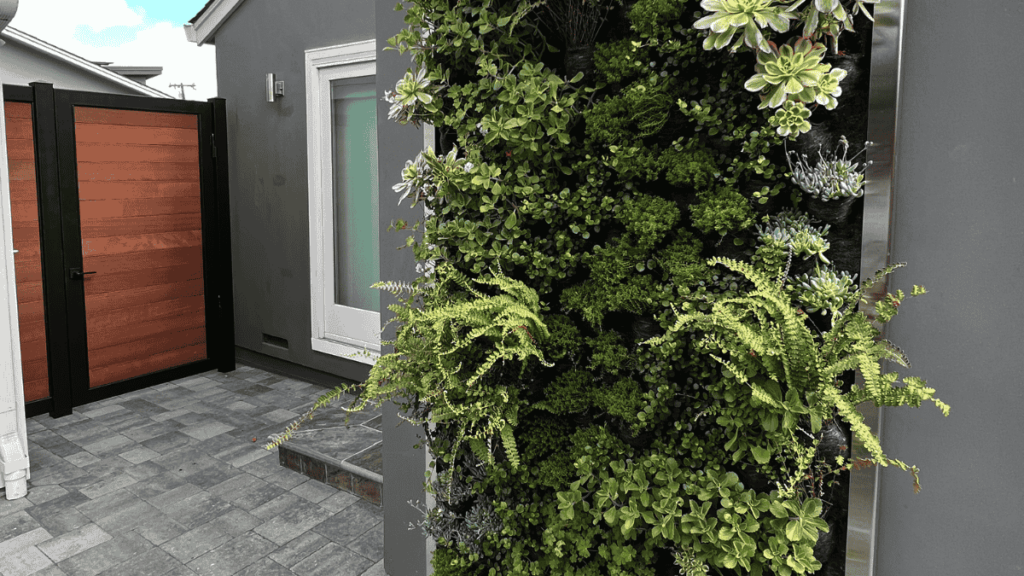Water Conservation Hacks: Designing with Drought-Tolerant Plants
Sustainable, Stunning, and Stress-Free: Designing with Drought-Tolerant Plants
Water conservation in landscaping is crucial in dry climates where water is scarce, but that doesn’t mean gardens have to suffer. We can create beautiful landscapes even with a limited water supply by designing with drought-tolerant plants.
These plants are not only practical but also essential for sustainable landscaping. They have special adaptations that allow them to survive dry periods, making them perfect for areas prone to drought. By including these hardy species in your landscape design, you can enhance the beauty of your surroundings while also conserving precious water resources.
The main idea is simple: by selecting drought-tolerant plants, you can create a garden that not only survives but also flourishes with less water. This approach supports sustainability and helps your landscape adapt to climate change. In this article, we will explore the world of drought-resistant plants and discover how they can transform your outdoor space into a thriving ecosystem.
Understanding Drought-Tolerant Plants
Drought-tolerant plants, as the name suggests, are species that have evolved to thrive in environments with limited water availability. These remarkable plants possess unique characteristics and adaptations enabling them to survive and even flourish in arid conditions where other plants might struggle.
Characteristics of Drought-Tolerant Plants
- Deep Root Systems: Many drought-tolerant species develop extensive root networks that penetrate deep into the soil, tapping into groundwater sources inaccessible to plants with shallower roots.
- Water Storage: Succulents like cacti are prime examples, with their fleshy leaves or stems capable of storing significant amounts of water for use during dry spells.
- Reduced Leaf Surface Area: Some plants minimize transpiration—the process of water loss through leaves—by having smaller or fewer leaves. This adaptation helps conserve moisture.
Benefits of Using Native Species
Choosing native species for your landscape not only supports local ecosystems but also offers practical advantages:
- Reduced Water Needs: Native plants are inherently adapted to the local climate, requiring less supplemental watering compared to non-native species. This trait makes them an ideal choice for sustainable landscaping.
- Increased Biodiversity: Incorporating native flora fosters biodiversity by providing habitat and food sources for indigenous wildlife, including pollinators such as bees and butterflies.
Adaptations Thriving in Arid Conditions
Beyond the obvious physical traits, these plants exhibit fascinating physiological strategies:
- Seasonal Dormancy: During extreme droughts, some species enter a state of dormancy, reducing metabolic activity until favorable conditions return.
- Efficient Photosynthesis: Certain drought-tolerant plants utilize specialized forms of photosynthesis (such as CAM photosynthesis) that allow them to fix carbon dioxide during cooler, more humid night hours—reducing water loss compared to daytime processes.
Understanding these characteristics and adaptations not only aids in selecting the right plants for a drought-resilient garden but also deepens our appreciation for the resilience and ingenuity found within nature’s design.
The Impact of Climate Change on Water Resources in California
California’s water resources are facing unprecedented challenges due to climate change. As temperatures rise and rainfall patterns change, the state’s ecosystems and water supply are significantly impacted.
Rising Temperatures and Changing Rainfall
- Higher temperatures contribute to the melting of snowpacks, which are crucial for water supply during dry months. This decrease in natural reservoirs puts a strain on the existing water supply.
- Changes in rainfall patterns result in more severe droughts and unpredictable rainfall, leaving reservoirs empty at critical times. These shifts disrupt the delicate balance required for agriculture, urban water use, and ecosystem preservation.
Challenges for California’s Water Management
- With less predictable water sources, traditional methods of managing water resources struggle to meet demand. Infrastructure built for previous climate conditions may not be sufficient under current pressures.
- Water allocation becomes a contentious issue as agriculture, industry, and municipalities compete for dwindling resources.
Adaptive Management for Resilience
To address these challenges, adaptive management strategies are crucial:
- Diversification of Water Sources: Incorporating alternative sources such as recycled water and desalination can help mitigate shortages.
- Improved Efficiency: Implementing technologies that enhance water use efficiency is essential. This includes smart irrigation systems and upgrades to existing infrastructure.
- Community Engagement: Educating communities about sustainable practices ensures collective action in conserving water resources.
By adopting these approaches, California can strengthen its resilience against the impacts of climate change. Imagining a future where innovative solutions tackle water scarcity empowers us to take proactive measures today. Working alongside nature by integrating drought-tolerant plants into landscaping not only saves water but also fortifies our defense against ongoing environmental changes.
Strategies for Designing with Drought-Tolerant Plants
Designing a water-wise garden begins with thoughtful plant selection. Native plants are an excellent choice as they are inherently adapted to the local climate, ensuring they thrive with minimal water. When selecting drought-tolerant plants, consider these criteria:
- Water Requirements: Opt for species that naturally require less water, such as succulents and cacti.
- Sun Exposure: Choose plants that match the sun conditions of your garden space.
- Soil Compatibility: Ensure that the plant’s soil preferences align with your garden’s soil type.
Incorporating a diverse range of species can enhance both the beauty and ecological balance of your garden. Some outstanding examples include:
- Succulents and Cacti: Known for their ability to store water, these plants are perfect for arid climates. Aloe vera, Agave, and various types of Echeveria offer vibrant colors and textures.
- Ornamental Grasses: Species like Blue Fescue and Mexican Feather Grass add movement and softness while requiring little irrigation.
Biodiversity is crucial in designing a resilient ecosystem. By integrating different plant types, you not only create visual interest but also support local wildlife such as pollinators and birds. This approach promotes a balanced environment where each plant plays a role in the garden’s overall health.
Implementing these strategies allows you to design a landscape that is both stunning and sustainable, reducing water use while enhancing the natural beauty and resilience of your outdoor space.
Efficient Irrigation Techniques for Water Conservation
Water-wise irrigation systems are the backbone of sustainable landscaping. Drip irrigation stands out as a champion in this regard. Unlike traditional sprinkler systems that can waste water through evaporation and runoff, drip irrigation delivers water directly to the plant’s root zone. This precision ensures that every drop counts, significantly reducing water loss.
Benefits of Drip Irrigation:
- Reduced Evaporation: With water targeted at the roots rather than sprayed into the air, less is lost to evaporation.
- Efficient Water Use: By focusing on the root zones, plants receive exactly what they need, minimizing overwatering and encouraging deeper root growth.
- Healthier Plants: Consistent moisture levels help prevent stress on plants, reducing the likelihood of disease.
- Flexibility and Scalability: Drip systems can be tailored to suit any garden size or shape, making them ideal for both sprawling landscapes and compact urban gardens.
Integrating these irrigation systems with drought-tolerant plants creates a synergy that maximizes water conservation. The garden not only thrives but also contributes positively to environmental sustainability by using resources judiciously.
Water Collection Methods to Supplement Your Garden’s Needs
Imagine your garden flourishing with minimal dependency on municipal water supplies. This vision becomes tangible by integrating water collection systems into your landscape design. These systems not only support the sustainability of drought-tolerant gardens but also enhance their resilience against water scarcity.
Types of Water Collection Systems
Here are some common types of water collection systems you can consider for your garden:
- Rain Barrels: A simple yet effective method, rain barrels capture and store rainwater from rooftops. They provide a renewable water source for your plants, reducing reliance on external supplies.
- Cisterns: Larger than rain barrels, cisterns collect substantial amounts of water, ideal for extensive landscapes or areas with limited rainfall.
- Greywater Systems: These systems recycle water from showers, sinks, and washing machines for irrigation purposes, maximizing resource use.
Rain Barrels Installation Guide
To harness the benefits of rain barrels, proper installation and maintenance are key:
- Select an Appropriate Location: Position your barrel beneath a downspout to efficiently capture runoff.
- Ensure Stability and Safety: Use a stable, level surface to prevent tipping. Secure tightly fitting lids to minimize mosquito breeding and debris entry.
- Connect a Hose or Spigot: Facilitate easy watering by attaching a hose or spigot near the base.
- Regular Maintenance: Clean gutters periodically to ensure clean water collection and check for leaks or clogs.
By implementing these systems thoughtfully, you align with nature’s rhythm and create a nurturing environment for your garden’s growth.
Design Principles for Sustainable Landscapes with Drought-Tolerant Plants
Creating a landscape that combines beauty with sustainability requires careful planning. Water Wise: Designing with Drought-Tolerant Plants means considering key elements to ensure your garden not only survives but thrives under water-conscious care.
1. Sun Exposure
Understanding the sun’s path across your landscape allows you to position plants effectively. Drought-tolerant plants often thrive in full sunlight, yet some prefer shaded areas. By mapping out sun patterns, you can group plants accordingly, ensuring each one receives optimal light for growth.
2. Soil Type
The foundation of any successful garden is its soil. Conducting a soil test can reveal its composition and water retention capabilities. Sandy soils drain quickly and may need organic matter to enhance moisture retention. Clay soils, in contrast, require amendments to improve drainage, preventing root rot in drought-tolerant varieties.
Thoughtful layout design not only enhances aesthetics but also optimizes water use efficiency and plant health. Consider these factors as integral aspects of creating a harmonious and sustainable garden space.
Maintenance Practices for Thriving Drought-Tolerant Landscapes
Regular maintenance is the cornerstone of a flourishing drought-tolerant garden. By investing time in consistent care, you can ensure your landscape remains vibrant and resilient through changing seasons.
Plant Health Checks: Importance
Monitoring plant health is crucial. Regular checks help catch early signs of stress, allowing for timely interventions that prevent further deterioration. Look for indicators such as:
- Wilting: Often a sign of water stress or root issues. Ensure plants are receiving adequate moisture and inspect for root rot.
- Discoloration: Yellowing or browning leaves may indicate nutrient deficiencies, pest infestations, or improper watering practices.
Addressing these symptoms swiftly can make all the difference. Consider:
- Adjusting irrigation schedules to meet seasonal demands.
- Examining soil quality and amending it with organic matter if necessary.
- Conducting pest inspections and employing eco-friendly control methods.
Beyond addressing immediate concerns, maintaining a lush garden involves proactive strategies. Deep watering techniques encourage robust root systems capable of enduring dry spells. Limiting fertilizer use reduces dependency on chemical inputs while fostering natural growth patterns.
A well-maintained drought-tolerant landscape not only conserves water but also enriches the environment, inviting biodiversity to flourish within its bounds. As you nurture your garden, you cultivate a living testament to sustainable beauty—one that thrives in harmony with nature’s rhythms.
Community Resources Supporting Water Conservation Efforts through Landscaping Initiatives
Embracing drought-tolerant landscaping can be a rewarding journey, especially with the support of community programs and municipal initiatives that promote sustainable practices. Many local governments recognize the importance of conserving water and offer various incentives to encourage homeowners to make environmentally conscious choices.
Here are some resources available in your community:
- Rebates for Lawn Replacement: Several municipalities provide financial rebates for replacing traditional lawns with drought-tolerant plants. These programs help offset the initial costs, making it easier for residents to transition their landscapes.
- Workshops and Educational Resources: Community centers often host workshops that educate participants on efficient irrigation methods and selecting appropriate plant species for local climates. These sessions empower individuals with the knowledge to create resilient gardens.
- Free or Discounted Mulch Programs: To further assist in moisture retention and weed control, some areas offer free or discounted mulch supplies, promoting healthier soil ecosystems.
By tapping into these resources, homeowners can contribute significantly to water conservation efforts while cultivating beautiful, sustainable environments.
Conclusion: Embracing Drought-Tolerance as a Pathway Towards Sustainable Landscapes in California
Adopting drought-tolerant landscaping practices can transform not just personal gardens but entire communities. By choosing plants that thrive with minimal water, you reduce your environmental impact and contribute to a more resilient ecosystem. The journey towards sustainability is both an individual responsibility and a collective effort.
Imagine your garden flourishing even in the driest seasons, a testament to the power of thoughtful design and resource management. With initiatives like Water Wise: Designing with Drought-Tolerant Plants, we empower ourselves and our neighborhoods to face climate challenges head-on.
The beauty of sustainable landscapes lies in their ability to conserve resources while enhancing our living spaces. As we become more aware of our environmental impact, each step taken towards water conservation represents hope for future generations. Together, let’s cultivate landscapes that reflect our commitment to the planet’s health and vitality.

Diego Torrelio
Founder & CEO





